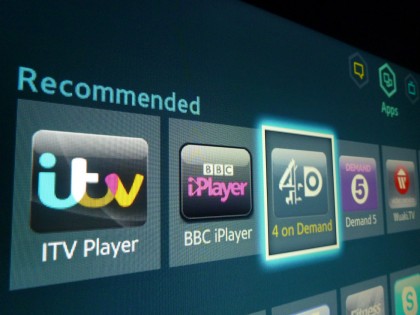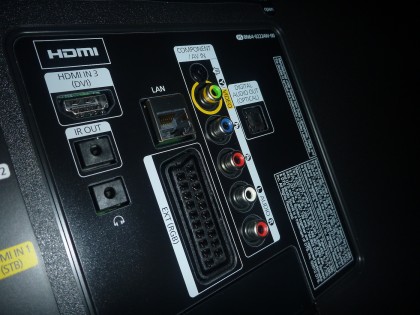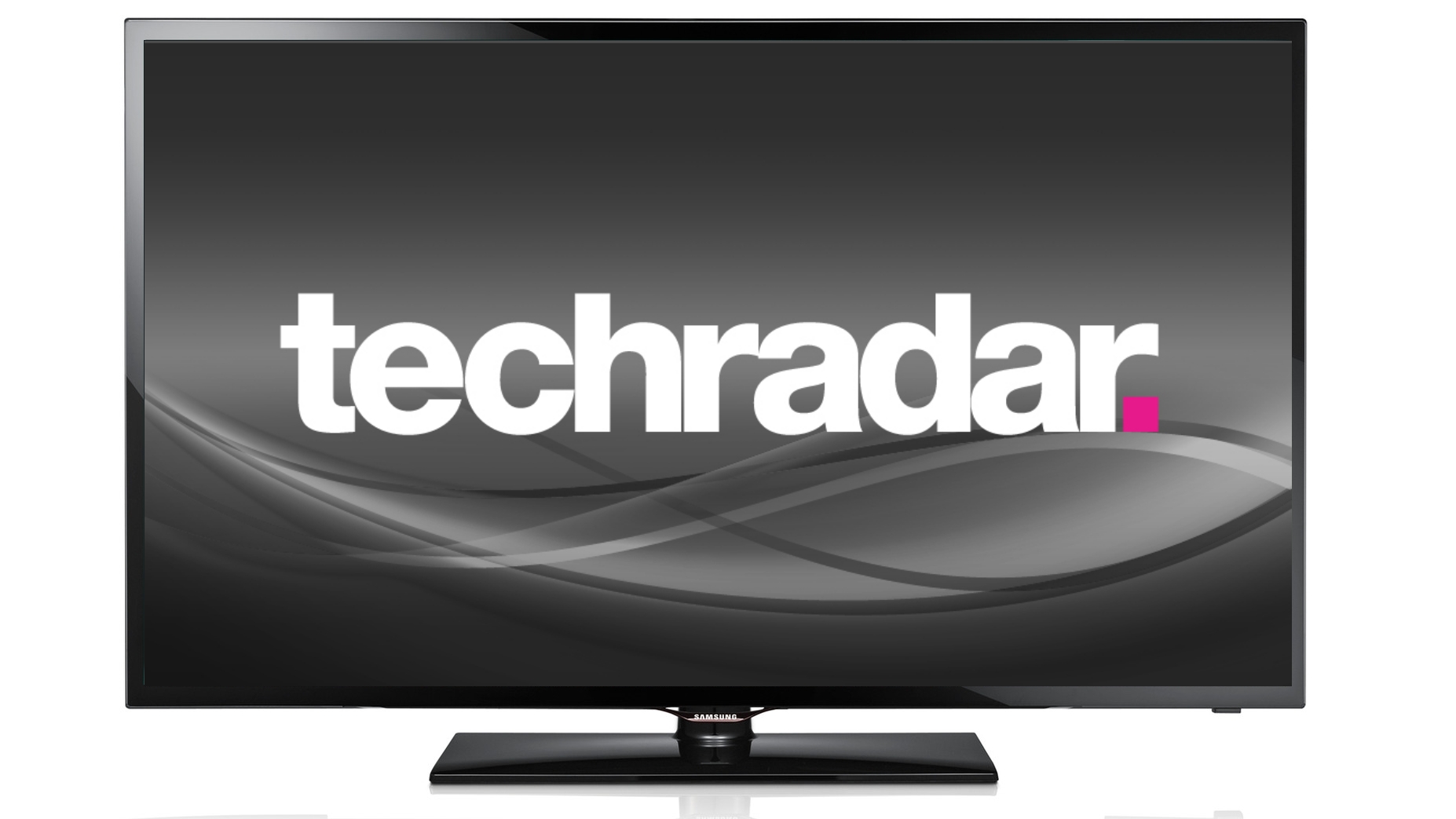TechRadar Verdict
Great value TV, loaded with features and with a low price, the UE42F5500 is as near to a bargain as you'll find – but it's not perfect.
Pros
- +
Smart Hub
- +
Digital file support
- +
Wi-Fi Low price
- +
Uniform brightness
Cons
- -
Motion blur
- -
VideoHub app dominates
- -
Viewing angle
- -
Basic build quality
Why you can trust TechRadar
With Smart Hub apps, a dual core processor, Freeview HD and a drastically discounted price at the time of writing, have we found Samsung's sweet-spot? The search for a a good value, well equipped 40-inch (ish) TV fit for a modern, connected living room simply must encounter Samsung's line-up of LED-backlit LCD TVs, of which this 42-inch UE42F5500 is one of the most appealing.
It's bereft of pricey picture-boosting circuitry found on the South Korean company's higher-end models, and nor – at 49.4mm – does it have the ultimate slim depth, but as an everyman TV the UE42F5500 is incredibly well positioned.
Despite its plethora of front-line features, it's the UE42F5500's dual-core processor that immediately piques our interest. Likely to make the UE42F5500 a lightning-quick TV to operate and navigate, that dual-core chip ought to also give a boost to the upscaling. That's always crucial on any Full HD TV such as this, though do bear in mind that the UE42F5500 doesn't have any 3D skills. Increasingly a default feature it may be, but we're not expecting its absence to have much effect on its popularity.
However, where its 'my first flat telly' status becomes really obvious is in the UE42F5500's design. It's not ugly – far from it – but the simple gloss black styling and remarkably lightweight (flimsy?) chassis lacks wow factor. Nor are we convinced that the UE42F5500 needs a Samsung logo poking out from the bottom of the bezel, but we do like the spider-like 'quad' desktop stand that lends the UE42F5500 a simple, floating look.
Also available
Freeview HD tuners, Smart Hub and dual core processors also feature on the other sets in the F5500 Series, though Samsung has created so many tiny variants that the prices are a mine-field of confusion. At the time of writing it was possible to get this 42-inch UE4F5500 for £399 (down from a list price of £699), which, considering what its brethren are selling for, makes it the sweet-spot by far.
Samsung's smaller 39-inch UE39F5500 (£449) and 40-inch UE40F5500 (£470) are priced above our bigger review sample, while bigger, pricier choices include the 46-inch UE46F5500 (£599) and 50-inch UE50F5500 (£779). Samsung also makes a couple of plasmas in the F5500 Series; the 51-inch PS51F5500 (£679) and 60-inch PS60F5500 (£949).
Features
The UE42F5500 is an LED backlit LCD TV with a 50Hz native Full HD panel, though what most buyers will be most interested in is its Smart Hub.
A lusciously designed and easy to navigate – thanks to the UE42F5500's dual-core processor – user interface that transits between five colourful panels using virtual page turns, its pre-installed apps are surely the best around. The collection includes all UK terrestrial TV catch-up apps – the BBC iPlayer, ITV Player, 4OD and Demand Five – as well as Blinkbox, Netflix, Lovefilm, BBC Sport, KnowHow Movies and many lesser known apps.

The Samsung Apps online store hosts a great deal more apps including the likes of Plex, TED, Crackle, Dailymotion, Muzu, Spotify, Rightmove, WatchIndia, Viewster, Ustream, Curzon Home Cinema, France 24, iConcerts, Woomi, ESPN Player, Vimeo, TuneIn, BFI Player, AccuWeather and Samsung's own VideoHub film rental service among many more.
It may possess the finest choice of apps around, but what the UE42F5500 doesn't have, however, is Samsung's suite of Smart Interaction 2.0 technologies; voice and gesture control. And a good thing, too.
What Samsung calls ConnectShare (USB 2.0) Movie is simply named Media Player on the remote control; this simple software, partially integrated into the Smart Hub panels, can play digital video, music and photo files from either hardware, like a USB flash drive or HDD, or over a network using DLNA. That means Windows computers and laptops.

While budget TVs from some rival brands do have four HDMI slots available, we're pretty comfortable with the UE42F5500's three HDMIs, two of which are situated on a side panel the TV's right-hand side (as it's viewed). Around those two HDMIs are a couple of USB 2.0 slots – one of which can be used to record or time-shift programmes from its Freeview HD tuner – as well as a Common Interface Slot and an RF aerial feed. It's a slightly odd place to put the latter, but it's recessed well enough to hide any protruding cables.
A panel on the UE42F5500's back contains the rest of the ins and outs; a set of component video inputs features alongside some stereo phono outs, and its green input also acts as en emergency composite video slot. Alongside are a digital optical audio output, a full RGB Scart and Ethernet, though the UE42F5500 does also have a built-in Wi-Fi module. Also back here is a headphone jack – close enough to the side-panel not to be inconveniently positioned, as it was on some Samsung TVs in 2013 – and that third HDMI slot. Our only issue is that all connectors on this rear panel poke outwards, which might cause problems for wall-mounters.
Picture processing forms part of Samsung's HyperReal Engine, though on the UE42F5500 it's fairly limited. Mega Contrast, Wide Colour Enhancer Plus and Dynamic Contrast Ratio are joined by 100 Clear Motion Rate, though the latter makes little difference to the UE42F5500's native 50Hz panel. Some motion interpolation circuitry would have been very useful.
Jamie is a freelance tech, travel and space journalist based in the UK. He’s been writing regularly for Techradar since it was launched in 2008 and also writes regularly for Forbes, The Telegraph, the South China Morning Post, Sky & Telescope and the Sky At Night magazine as well as other Future titles T3, Digital Camera World, All About Space and Space.com. He also edits two of his own websites, TravGear.com and WhenIsTheNextEclipse.com that reflect his obsession with travel gear and solar eclipse travel. He is the author of A Stargazing Program For Beginners (Springer, 2015),

